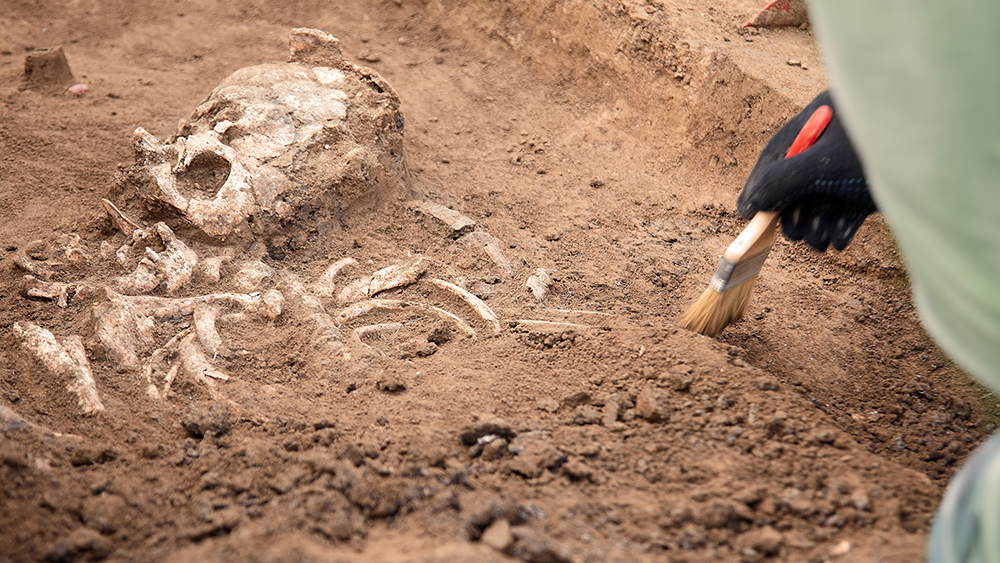Archaeologists unearth Medieval poop that might hint at what a healthy gut microbiome looks like
10/09/2020 / By Virgilio Marin

Medieval fecal samples from Israel and Latvia could provide crucial insights into how gut diseases developed, suggests a recent study published in the journal Philosophical Transactions of the Royal Society B.
The samples were recovered from two latrines located in the capital cities of Jerusalem and Riga, which date back to between the 14th and 15th centuries. An international team of researchers analyzed the samples and posited that the genetic material makeup of the Medieval gut microbiome is different from those of modern humans.
Studying such pre-Industrial samples could provide a baseline for a healthy gut microbiome, according to co-author Piers Mitchell, a biological anthropologist at the University of Cambridge. “If we are to determine what constitutes a healthy microbiome for modern people, we should start looking at the microbiomes of our ancestors,” he said.
Tricky microbial retrieval yields impressive results
At the start of the study, co-author Kirsten Bos, an anthropologist at the Max Planck Institute for the Science of Human History in Germany, was skeptical of the study’s feasibility. Successful microbial retrievals in the past came from calcified tissues, such as bones and tartar. But these were preserved under different conditions: The latrine samples offered little certainty that the molecular biosignatures survived over hundreds of years.
The first challenge was distinguishing the actual gut microbes from those introduced by the environment. Through light microscopy, the team was able to identify various kinds of bacteria, archaea, protozoa, parasitic worms and fungi, some of which were known to inhabit the gut of modern humans. They then compared the DNA of these organisms to the gut microbiome of both modern Industrial and earlier hunter-gatherer populations.
According to co-author Susanna Sabin of Arizona State University, the microbiomes in the Jerusalem and Riga samples shared some common characteristics. There are also some similarities with those of the hunter-gatherers and industrial humans, Sabin added, but the Medieval microbiomes appeared to form “their own unique group.”
Despite the initial hitches, Sabin said that studying the latrine samples gave them more information about pre-industrial populations in the European and Middle-Eastern regions than focusing only on an individual fecal sample. In turn, the findings of the study could provide a baseline for comparison, as the samples came from a group of people who lived before antibiotic use, fast food and the other trappings of industrialization, according to Mitchell.
The researchers recommended further research devoted to other archaeological sites and time periods. This can help experts fully understand how the human microbiome changed over time. (Related: Food residues from 500-year-old pottery in Northamptonshire suggest medieval peasant diets were healthier than modern ones.)
Gut microbiome is key to adaptation
The gut microbiome plays an important role in health. It helps the body set up defenses against harmful pathogens and metabolize nutrients from food. Furthermore, it might also be crucial to human adaptation, suggested another study, published in the journal Frontiers in Ecology and Evolution.
Using data from previous research, experts from the U.S., Denmark and Germany compared the gut microbiota of early humans, apes and other non-human primates.
According to the authors, the gut microbiome of early humans varied substantially in function and composition. The variation appeared to be correlated with geography and lifestyle, suggesting that the human gut microbiome assimilated quickly to new environmental conditions. This allowed humans to detoxify or digest exotic foods and endure novel diseases.
Lead author Rob Dunn, an ecologist at the North Carolina State University, urged researchers to explore how the human microbiome evolved over the centuries. He hopes that in the next few years, he’ll encounter research that puts more focus on microbes in the past and less on sharp rocks.
Read more research on the human gut microbiome at Digestion.news.
Sources include:
Tagged Under: adaptation, ancient humans, Archaeology, artifacts, discoveries, gut health, gut microbes, gut microbiome, Industrial Age, Medieval health, research
RECENT NEWS & ARTICLES
COPYRIGHT © 2017 ARTIFACTS NEWS




















